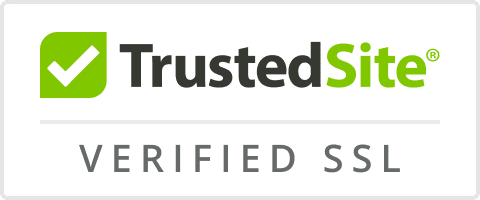Backing up your WordPress site isn’t just a good practice—it’s essential. Websites face countless risks daily, from hacking attempts to unexpected crashes, and losing your data can be devastating. That’s why setting up automatic backups is a game-changer for keeping your site secure and your mind at ease.
I’ve seen firsthand how automated backups can save hours of stress and effort. They ensure your content, files, and settings are always recoverable, no matter what happens. The best part? You don’t need to be a tech expert to get started. With the right tools and a few simple steps, you can protect your site and focus on growing your online presence. Let me walk you through how to do it.
Importance Of Automatic Backups In WordPress
Automatic backups safeguard your WordPress site by ensuring data restoration is possible after unexpected events. Errors, hacking, or server failures can compromise your site, leading to data loss. With backups, recovery becomes efficient and stress-free.
Hackers exploit vulnerabilities, making sites targets for attacks. Restoring a clean version of your site from a backup minimizes downtime and preserves integrity. Regular automated backups mitigate these risks effectively.
Server issues or hosting problems may result in crashes. Automatic backups maintain recent copies of your data, reducing the chances of permanent loss. This ensures continuity for both site owners and visitors.
Content updates and plugin installations sometimes trigger unforeseen issues. If errors occur during changes, backups allow quick reversion to previous functional states without hassle.
Automatic backups require minimal effort to set up and operate. After configuration, they run independently, ensuring your updates, configurations, and files are always protected without manual intervention.
Steps To Set Up Automatic Backups In WordPress
Setting up automatic backups in WordPress ensures that your site’s data remains protected and accessible. I’ll outline the key steps below to simplify the process.
Choosing The Right Backup Plugin
Selecting a reliable plugin is essential for effective backups. Options like UpdraftPlus, BackupBuddy, and Jetpack Backup offer features such as cloud storage integration and incremental backups. Focus on plugins compatible with your WordPress version and hosting provider, ensuring they meet your needs.
Installing And Configuring The Plugin
After choosing a plugin, install it via the WordPress admin dashboard under “Plugins.” Activate the plugin and navigate to its settings. Configure basic options like backup location (e.g., Google Drive, Dropbox, or Amazon S3) and whether to include database and site files.
Scheduling Automatic Backups
Set a schedule based on your site’s activity level. For blogs with frequent updates, daily backups are ideal, while less-active sites may need weekly backups. Most plugins allow you to customize schedules to match your content update frequency. Enable notifications to monitor backup success.
Testing Your Backup Setup
Verify that backups function correctly by restoring a stored version to a staging environment. Check for errors and confirm the backup includes critical elements like posts, media, and plugins. Testing ensures smooth recovery during emergencies.
Recommended Backup Plugins For WordPress
Selecting the right backup plugin ensures your site is protected against data loss. I’ll outline both free and premium options to help you decide based on your needs.
Free Backup Solutions
- UpdraftPlus: UpdraftPlus offers comprehensive features, including scheduled backups, restore options, and cloud storage integration (Google Drive, Dropbox, and more). It’s beginner-friendly and supports database and file backups.
- BackWPup: BackWPup simplifies backup processes with database backup support, automatic scheduling, and cloud storage compatibility. It’s fully functional in its free version, covering most small site needs.
- WPvivid Backup Plugin: WPvivid provides one-click backup and restore functionality, remote storage support (Amazon S3, Dropbox), and migration options. It’s ideal for regular backups without technical complexity.
Premium Backup Options
- BackupBuddy: BackupBuddy, a reliable paid solution, offers complete WordPress backup, including uploads, themes, and database files. It supports offsite storage (Google Drive, Dropbox) and site migration features.
- Jetpack Backup: Jetpack Backup ensures real-time backups and easy restoration through its user-friendly dashboard. Its automated system captures changes as they occur, ideal for eCommerce sites or frequently updated blogs.
- BlogVault: BlogVault includes incremental backups, offsite storage, and a staging environment for testing changes. It’s optimized for large or high-traffic sites needing advanced features.
Each plugin caters to different requirements, from free basic backups to premium solutions offering advanced tools.
Best Practices To Ensure Backup Security
Ensuring backup security prevents data loss and protects sensitive information. I focus on key measures to strengthen the integrity of your WordPress backups.
Storing Backups Off-Site
Storing backups off-site guards against data loss during server failures or physical damage. I recommend using cloud storage services like Google Drive, Dropbox, or Amazon S3. Many plugins, including UpdraftPlus and BackupBuddy, provide direct integration with these platforms. By distributing backups across multiple locations, I ensure that recovery options are always accessible, even in extreme cases like server hacking.
Encrypting Backup Files
Encrypting backup files adds a layer of protection against unauthorized access. I leverage plugins that support encrypted backups, such as Jetpack Backup or BlogVault. Encryption ensures that files uploaded to cloud storage services remain secure, even if the storage account is compromised. I advise enabling SSL during data transfer to further enhance security by preventing information interception.
Regularly Monitoring Backup Status
Monitoring backup status validates that backups are complete, functional, and up-to-date. I schedule regular checks to confirm that new backups are successfully stored and not corrupted. Plugins like BackupBuddy offer activity logs that allow me to review backup performance. By testing restored backups periodically, I reduce the risk of discovering issues only during a critical recovery situation.
Common Mistakes To Avoid
Skipping testing of backup files often leads to false security. I always test restored backups to confirm that all data and configurations recover without issues. Avoid assuming a backup is reliable without verifying its functionality.
Storing backups only on the same server exposes your site to complete data loss. I use off-site storage options like cloud services (Google Drive, Dropbox, or Amazon S3) to safeguard against server crashes or hosting provider failures.
Ignoring backup schedules results in outdated recoveries. I configure automatic backups based on my site’s activity, ensuring I always have recent copies of critical changes. Frequently updated sites benefit from daily schedules, while weekly backups may suffice for less active ones.
Failing to secure backup files risks unauthorized access. To protect sensitive information, I encrypt backups and transfer files over SSL for added security. Neglecting these steps increases the vulnerability of stored files.
Selecting unreliable plugins undermines the backup process. I research and choose established plugins with positive reviews and regular updates. Using poorly maintained tools can result in incomplete backups or compatibility issues.
Keeping too many backup copies strains storage limits and complicates management. I regulate my storage by retaining only the most recent and essential backup versions, deleting older, unnecessary ones.
Neglecting plugin updates reduces functionality and security. I regularly update my backup plugin to access new features and patches, avoiding compatibility problems with WordPress updates or themes.
Conclusion
Setting up automatic backups for your WordPress site is a crucial step in ensuring its security and reliability. With the right tools and practices in place, you can protect your content, configurations, and hard work from unexpected threats or errors.
Taking the time to configure backups properly not only saves you from potential headaches but also gives you peace of mind knowing your site is always recoverable. By choosing reliable plugins, scheduling backups wisely, and securing your files, you’re building a strong foundation for your website’s long-term stability.
Don’t wait for a disaster to strike—start implementing automatic backups today and keep your WordPress site safe and secure.





















